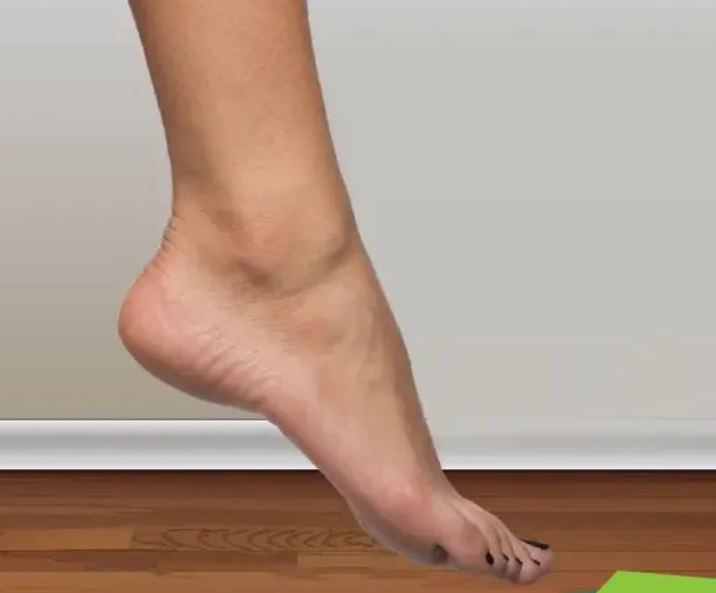Physiotherapists often use various electrical modalities to treat foot drop, aiming to improve muscle strength, enhance nerve function, reduce pain, and support overall rehabilitation. Here are some common electrical modalities used in the treatment of foot drop:
Heat and Cold Therapy: Heat therapy also known as thermotherapy and cold therapy also known as cryotherapy helps to manage pain and inflammation.
Functional Electrical Stimulation (FES): Purpose: To stimulate the peroneal nerve and the muscles responsible for dorsiflexion (lifting the foot).
Application: Electrodes are placed over the nerve or muscle to deliver electrical impulses, helping the foot lift during walking. FES is often used during gait training to improve walking patterns and reduce foot drop.
Transcutaneous Electrical Nerve Stimulation (TENS): Purpose: Primarily for pain relief.
Application: Electrodes are placed on the skin near the affected area to deliver electrical impulses that interfere with pain signals sent to the brain, helping to alleviate discomfort associated with foot drop.
Neuromuscular Electrical Stimulation (NMES): Purpose: To strengthen weak muscles and prevent muscle atrophy.
Application: Electrodes are placed on the skin over the affected muscles, and electrical impulses are used to cause muscle contractions. This helps maintain or improve muscle mass and strength.
Interferential Current (IFC) Therapy: Purpose: Pain relief and reduction of inflammation.
Application: Uses two high-frequency currents that intersect to create a low-frequency current that penetrates deeper into tissues. Electrodes are placed around the affected area to deliver the current.
Iontophoresis: Purpose: Delivering medication directly to the affected area through the skin.
Application: Uses a mild electrical current to drive anti-inflammatory or pain-relieving medications into the tissue, helping to reduce pain and inflammation.
High-Voltage Pulsed Galvanic Stimulation (HVPGS): Purpose: To reduce pain and edema, promote wound healing, and stimulate muscle activity.
Application: High-voltage, low-frequency electrical pulses are delivered to the affected area through electrodes.
Russian Stimulation: Purpose: To enhance muscle strength and re-education.
Application: Uses medium-frequency electrical currents to stimulate muscle contractions. Often used for muscle strengthening and re-training.
Microcurrent Therapy: Purpose: To promote tissue healing and reduce pain.
Application: Uses very low-intensity electrical currents that mimic the body's natural electrical impulses to stimulate cellular repair and reduce pain.
Strengthening Exercises:
- Dorsiflexion Exercises: Strengthening the muscles that lift the foot, such as the tibialis anterior.
Ankle Dorsiflexion with Resistance Band: Sitting or lying down, loop a resistance band around the foot and pull the toes toward the body.
- Plantar Flexion Exercises: Strengthening the calf muscles to provide better support and balance.
- Heel Raises: Standing and lifting the heels off the ground.
Stretching Exercises:
- Calf Stretches: To maintain flexibility in the Achilles tendon and prevent tightness.
- Wall Stretch: Leaning against a wall with one foot forward and one foot back, stretching the back calf.
- Hamstring Stretches: To ensure the entire lower leg remains flexible.
Balance and Proprioception Training:
Single-Leg Stands: Standing on one leg to improve balance.
Balance Board Exercises: Using a wobble board to challenge stability and proprioception.
Gait Training:
Heel-to-Toe Walking: Practicing walking with a heel-to-toe pattern to improve gait mechanics.
Assisted Walking: Using parallel bars or a therapist’s assistance to practice proper walking techniques.
Treadmill Training: To improve walking endurance and gait pattern, sometimes with body-weight support.
Manual Therapy:
Soft Tissue Mobilization: Massage techniques to reduce muscle tightness and improve circulation.
Joint Mobilization: Techniques to enhance joint flexibility and movement.
Orthotic Devices:
Ankle-Foot Orthoses (AFOs): Braces that support the foot and ankle, holding them in a more functional position and preventing foot drop during walking.
Aquatic Therapy: Exercising in water to reduce the impact on joints and improve muscle strength.
Functional Training:
Task-Specific Training: Practicing activities of daily living (e.g., stepping over objects, climbing stairs) to improve functional mobility.


